Texasplume (
Bauhinia lunarioides), also called Anacacho orchid tree, may look delicate, but this drought-tolerant Texas native plant thrives in rocky, alkaline soil. It can handle sunny exposures and filtered shade. Commonly grown as a large shrub, Texasplume can also be trained into a small tree, adding to its versatility in the landscape.
This semievergreen shrub offers fragrant pink or white orchid-shaped flowers in spring above green leaves that resemble the wings of a butterfly. It is deer-resistant and attracts bees and butterflies.
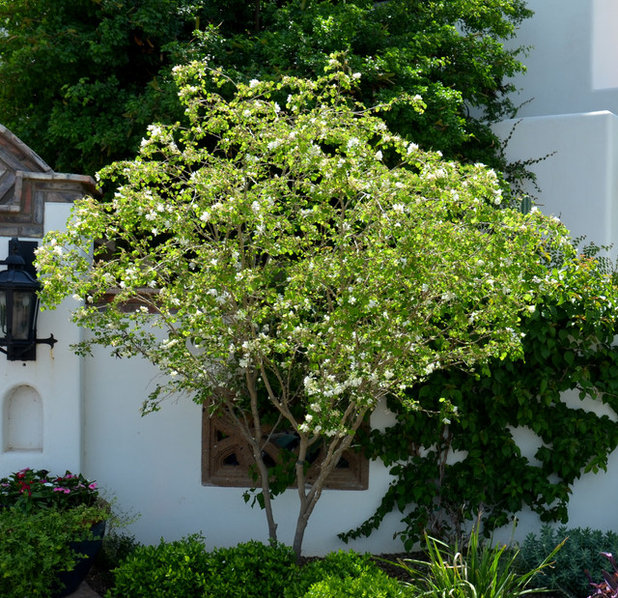
Noelle Johnson Landscape Consulting
Botanical name: Bauhinia lunarioides (syn.
Bauhinia congesta)
Common names: Texasplume, Anacacho orchid tree, Chihuahuan orchid shrub, white orchid tree
Origin: Native to southwestern Texas and northeastern Mexico, where it is found growing in rocky canyons
Where it will grow: Hardy to 15 degrees Fahrenheit (there are some reports of its surviving down to 10 degrees), or minus 9.4 degrees Celsius (USDA Zone 8; find your zone)
Water requirement: Moderate; water deeply every 10 days in summer, twice a month in spring and fall, and monthly in winter
Light requirement: Full sun to filtered shade (avoid western exposure)
Mature size: 8 to 12 feet tall and 6 to 10 feet wide
Benefits and tolerances: Deer-resistant; flowers attract bees and butterflies
Seasonal interest: Semievergreen foliage shaped like butterfly wings; flowers appear in spring through summer; some reblooming can occur in fall in response to rain
When to plant: Spring or fall
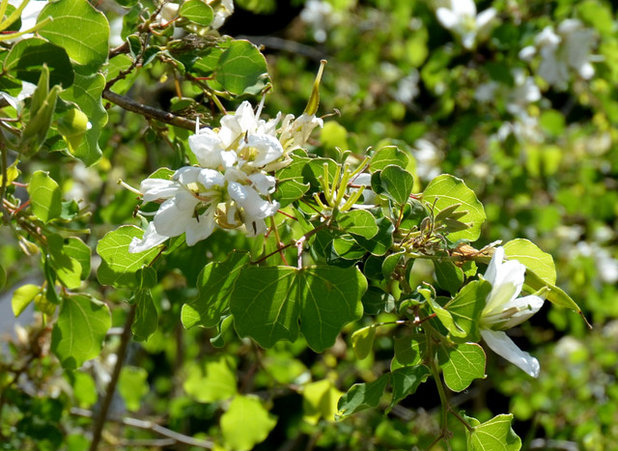
Noelle Johnson Landscape Consulting
Distinguishing traits. Anacacho orchid shrub’s foliage is quite attractive, with dark green leaves that are three-quarters of an inch to an inch long and have a unique butterfly shape.
Fragrant flowers begin to appear in spring and last into the first part of summer. Sometimes flowers will reappear in fall if sufficient rain has fallen.
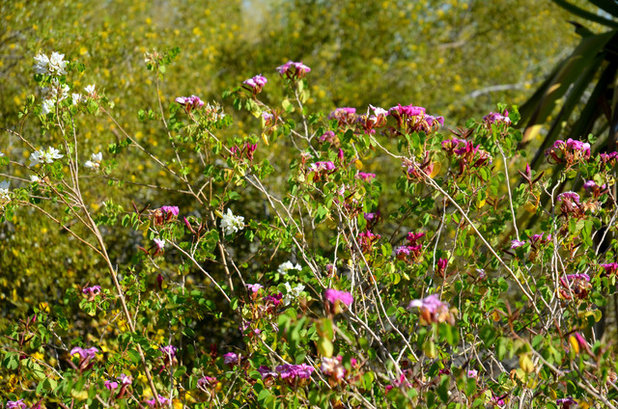
Noelle Johnson Landscape Consulting
The five-petaled flowers of this Texas native are either white or pink and resemble small orchids. Shrubs grown in the garden typically feature white flowers, while the pink blossoms are more often seen in the plant’s native Chihuahuan desert habitat. Both can be used in the garden.

Noelle Johnson Landscape Consulting
How to use it. When allowed to grow as a large shrub, Anacacho orchid shrub makes a great backdrop for lower-growing plants, such as Cleveland sage (
Salvia clevelandii), lantana (
Lantana spp.), Mexican honeysuckle (
Justicia spicigera) and pink fairy duster (
Calliandra eriophylla). It also can be used to create a tall, informal hedge or to screen an unwelcome view.
As a small tree, this Texas native makes an excellent addition to a patio or courtyard. It can anchor a planting bed or flank an entry while surrounded by colorful, drought-tolerant perennials, such as angelita daisy (
Tetraneuris acaulis), autumn sage (
Salvia greggii), desert marigold (
Baileya multiradiata), Mexican bush sage (
Salvia leucantha) and Parry’s penstemon (
Penstemon parryi).
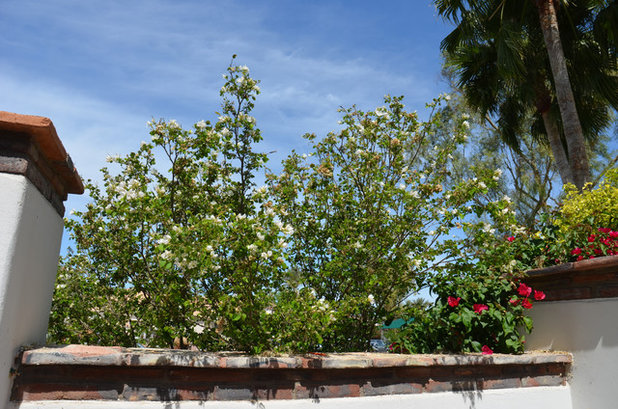
Noelle Johnson Landscape Consulting
Planting notes. Plant in well-drained soil in a location in full sun or filtered shade, avoiding western exposure. Keep away from areas where it will be exposed to high winds, as its branches are somewhat brittle.
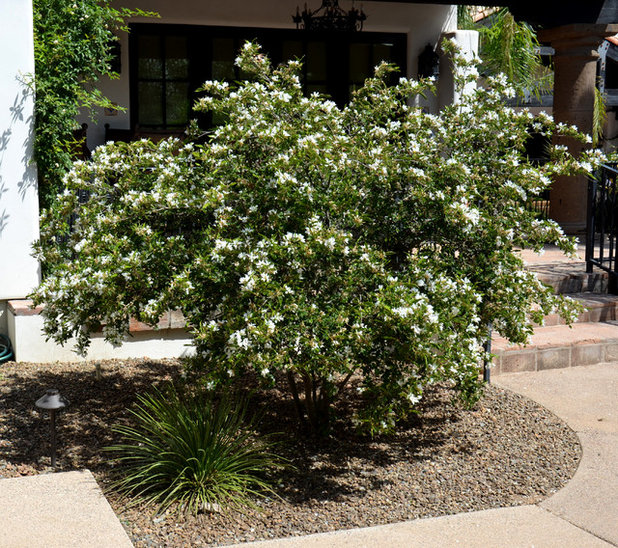
Noelle Johnson Landscape Consulting
This large shrub isn’t fussy and needs only minimal pruning to maintain its desired size. No fertilizer is needed. Like most plants native to the Southwest, Anacacho orchid shrub is drought-tolerant but can also handle areas that receive plentiful water as long as the soil is well-drained.





